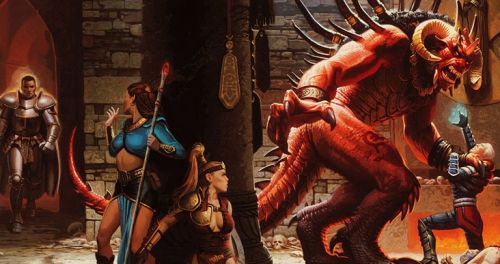As 1996 drew to a close, a new chapter in videogame history was beginning. On December 31st of that year, Diablo was released. It was a smash hit, and forever altered the gaming landscape. Diablo was a hybrid, blending action and RPG elements together, and it was incredibly fun to play, especially in cooperative mode with a few friends. A lesser-known expansion, Hellfire, was released in late 1997. The superb sequel, Diablo 2, came along in 2000, followed by the Lord of Destruction expansion in 2001. The series is one of the most adored in video gaming, and for good reason. It went on to spawn countless successors and imitators, arguably creating a new genre, the action RPG. Today, we’ll take a look at each game and expansion in the series, tracking the evolution of Diablo in anticipation of the launch of Diablo 3 next week.

Diablo (1996)
Looking back on Diablo today, it seems very simple. There are only three classes, sixteen levels in the dungeon, and a very small town to interact in. The graphics are primitive, and the interface feels raw and unrefined. Even though fifteen years of technological improvements have passed by, Diablo’s random dungeons and loot hunting are still compelling.
The classes in Diablo included the Warrior, Rogue, and Sorcerer. Unlike the many games that followed in its footsteps, the original Diablo’s three classes don’t have much to differentiate between them. Item use is not tied to class, but instead to statistics; a rogue can wear plate armor, for instance, if she spends enough stat points in Strength. All three classes can learn all the spells in the game, provided they find the right books to teach them. The three classes are quite different than the totally unique heroes in Diablo 2 and 3.
Though they have much in common, a few things differentiate Diablo’s classes from one another. The maximum stats for each are different. At higher levels, the Warrior will have more hit points, and the Sorcerer will have more mana, for example. Class-only skills include the Warrior’s talent for repair, the Rogue’s trap detection skills, and the Sorcerer’s ability to recharge magical staves. Perhaps the most significant difference between the classes are the attack and spell-casting animations. Warriors swing weapons the quickest, and Sorcerers can cast spells faster, while Rogues are unmatched in archery.
